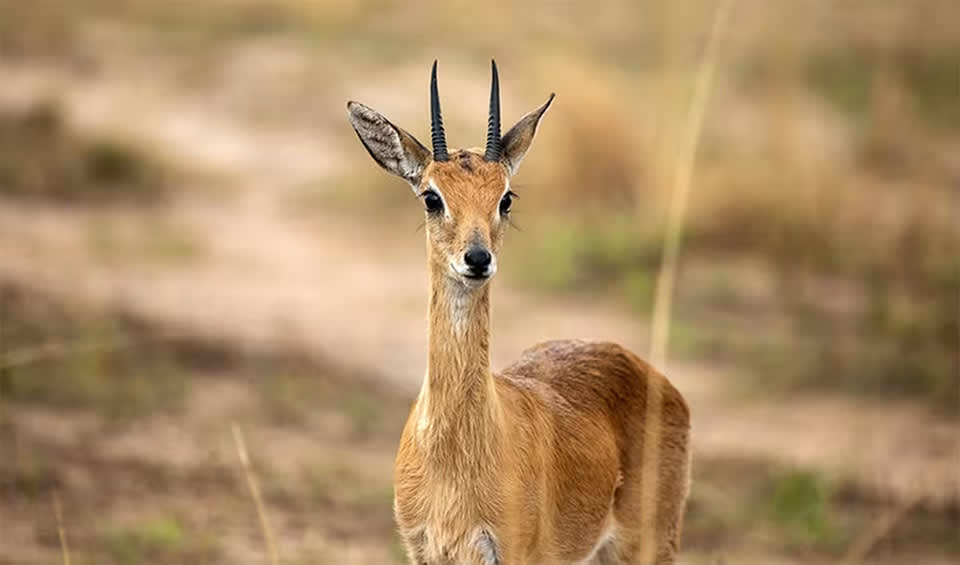A small, elegant antelope found across sub-Saharan Africa, from Senegal in the west to Ethiopia in the east and southwards to Angola and South Africa. This species is noted for its adaptability to a variety of habitats, including savannahs, floodplains, and grasslands, provided these areas offer sufficient cover in the form of tall grasses or shrubs.
In terms of appearance, the oribi boasts a sleek, glossy coat that can range in color from a light yellowish tint to a deeper rufous brown, providing camouflage against the savannah backdrop. A distinctive white coloration marks its chin, throat, underside, and rump, offering a stark contrast to its overall body color. This contrast plays a role in social signaling among individuals. The oribi’s bushy tail features a darker color on the outside, typically black or brown, with a white inside, which may be flashed as a warning signal to other oribis when alarmed.
Male oribis are equipped with short, straight horns that measure between 8 to 18 cm (3 to 7 inches) in length. These horns are primarily used in displays of dominance and in defense against rivals during the breeding season. Unlike males, females lack horns, a common sexual dimorphism trait in many antelope species.
One of the most intriguing aspects of Oribi social behavior is the so-called “Dung ceremony.” This ritual involves the formation of temporary dung middens by all members of an Oribi group. These middens serve not only as territorial markers but also as focal points for social interaction, helping to maintain and reinforce social bonds within the group.
Distribution
 Angola
Angola Benin
Benin Botswana
Botswana Burkina Faso
Burkina Faso Burundi
Burundi Cameroon
Cameroon Central Af. Rep.
Central Af. Rep. Chad
Chad Côte D’ivoire
Côte D’ivoire DR Congo (Kinshasa)
DR Congo (Kinshasa) Eritrea
Eritrea Eswatini
Eswatini Ethiopia
Ethiopia Gambia
Gambia Ghana
Ghana Guinea-Bissau
Guinea-Bissau Guinea
Guinea Kenya
Kenya Lesotho
Lesotho Malawi
Malawi Mali
Mali Mozambique
Mozambique Niger
Niger Nigeria
Nigeria Rwanda
Rwanda Senegal
Senegal Sierra Leone
Sierra Leone Somalia
Somalia South Africa
South Africa South Sudan
South Sudan Sudan
Sudan Tanzania
Tanzania Togo
Togo Tunisia
Tunisia Official estimate
Official estimate
 Uganda
Uganda Zambia
Zambia Zimbabwe
ZimbabweAnything we've missed?
Help us improve this page by suggesting edits. Glory never dies!
Suggest an editGet to know me
Terrestrial / Aquatic
Altricial / Precocial
Polygamous / Monogamous
Dimorphic (size) / Monomorphic
Active: Diurnal / Nocturnal
Social behavior: Solitary / Pack / Herd
Diet: Carnivore / Herbivore / Omnivore / Piscivorous / Insectivore
Migratory: Yes / No
Domesticated: Yes / No
Dangerous: Yes / No




